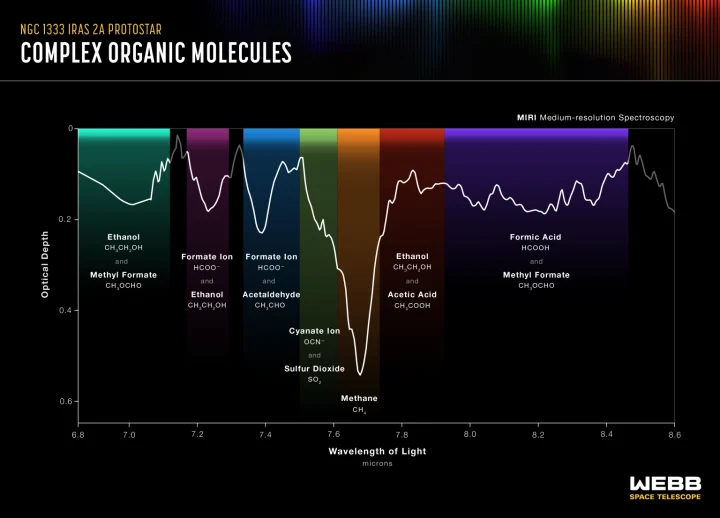The science team also detected simpler molecules, including formic acid (which causes the burning sensation of an ant sting), methane, formaldehyde, and sulfur dioxide. Research suggests that sulfur-containing compounds like sulfur dioxide played an important role in driving metabolic reactions on the primitive Earth.

NASA’s James Webb Space Telescope’s MIRI (Mid-Infrared Instrument) has identified a variety of complex organic molecules that are present in interstellar ices surrounding two protostars. These molecules, which are key ingredients for making potentially habitable worlds, include ethanol, formic acid, methane, and likely acetic acid, in the solid phase. The finding came from the study of two protostars, IRAS 2A and IRAS 23385, both of which are so young that they are not yet forming planets.
Illustration by NASA, ESA, CSA, L. Hustak (STScI). Science: W. Rocha (Leiden University).

